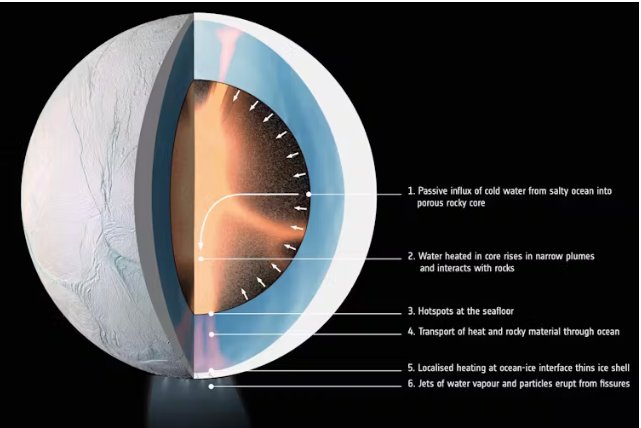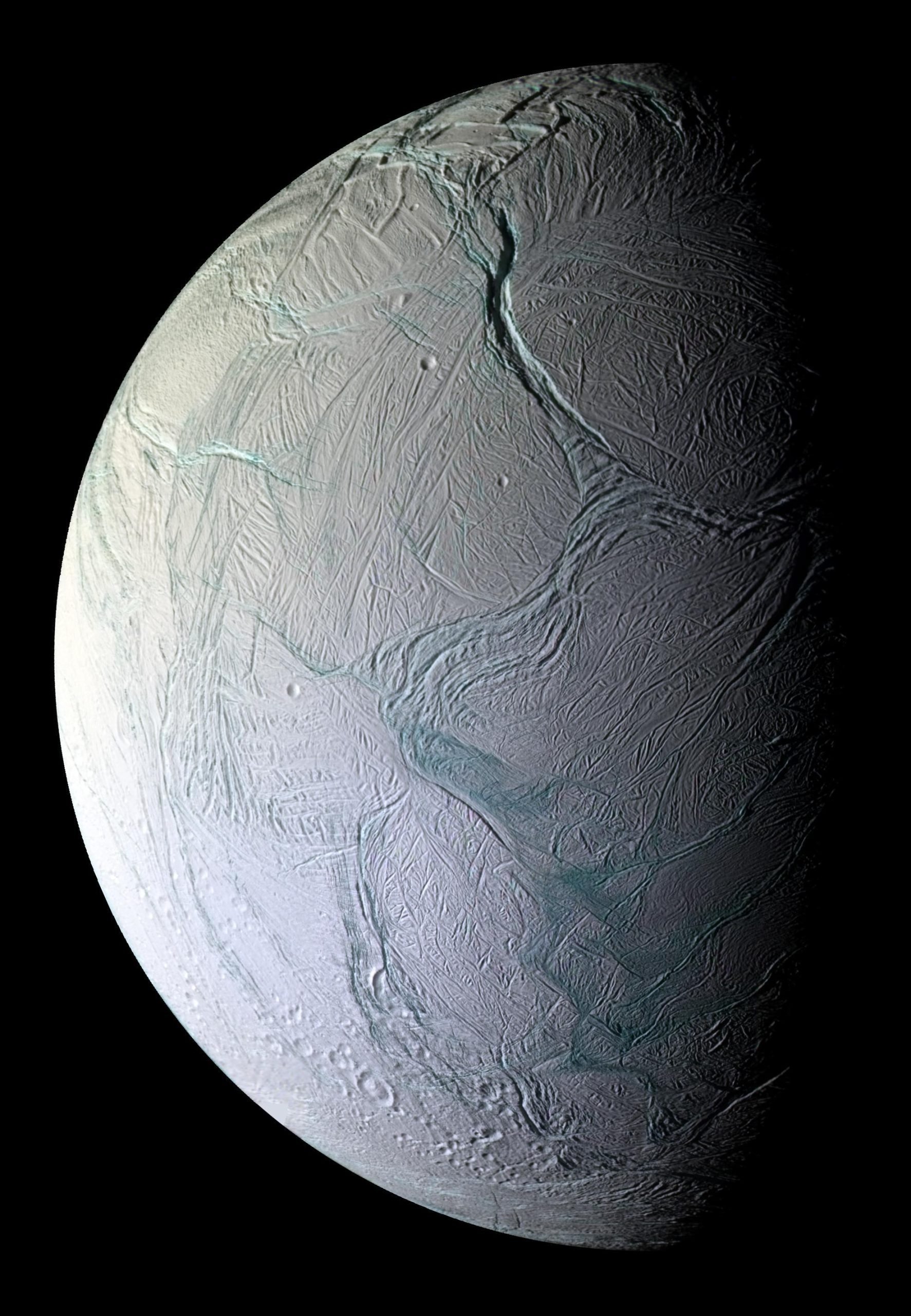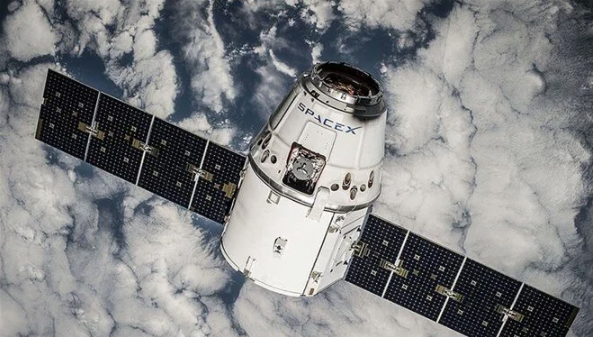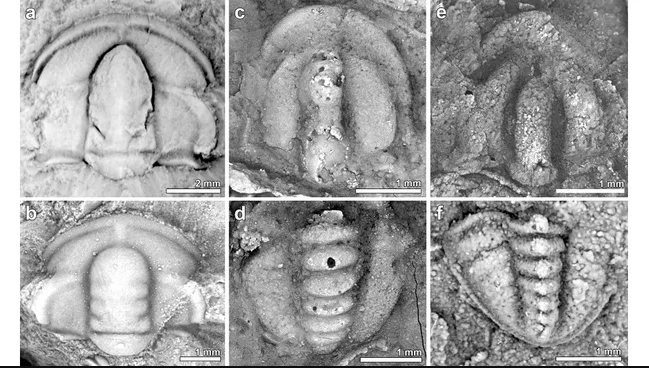Saturn, the ringed giant of our solar system, boasts an impressive collection of moons – a staggering 146, to be exact. Among them, Enceladus emerges as a captivating celestial body, offering tantalizing clues about the potential for extraterrestrial life.
From 2004 to 2017, the Cassini spacecraft, a collaborative effort between NASA, the European Space Agency, and the Italian Space Agency, conducted an in-depth exploration of Saturn, its magnificent rings, and its diverse family of moons. The mission yielded a trove of groundbreaking discoveries, with Enceladus taking center stage.
Despite its modest size – a mere 313 miles (504 kilometers) in diameter – Enceladus harbors a remarkable secret beneath its icy exterior: a vast liquid water ocean that encompasses the entire moon. Geysers located at the moon’s southern pole erupt with plumes of gas and ice grains, originating from this subsurface ocean and venturing into the space beyond.
During the Cassini mission, scientists, while not initially expecting to analyze actively emitted ice grains, utilized a dust analyzer onboard the spacecraft. This instrument provided invaluable insights into the composition of Enceladus’ subsurface ocean, shedding light on its potential habitability.
As a planetary scientist and astrobiologist specializing in the study of ice grains from Enceladus, I am intrigued by the possibility of life existing within this oceanic realm and other icy moons within our cosmic neighborhood. Moreover, understanding how to detect signs of life in such environments remains a key focus of our research efforts.
Enceladus boasts a cocktail of ingredients essential for life as we know it. Much like Earth’s oceans, its liquid water ocean contains salt – predominantly sodium chloride – alongside a variety of carbon-based compounds. Furthermore, the moon’s tidal heating mechanism generates internal energy, contributing to its potential habitability.
In a significant development in 2023, scientists, including myself, detected phosphate – a crucial component for life on Earth – within ice grains originating from Enceladus’ ocean. Phosphate, a form of phosphorus, plays a fundamental role in biological processes, serving as a building block for DNA, cell membranes, and bones. This groundbreaking discovery marks the first time such a compound has been identified in an extraterrestrial water ocean, further enhancing Enceladus’ allure as a potential harbor for life beyond our planet.
Enceladus’ rocky core likely interacts with its water ocean through hydrothermal vents – hot, geyser-like structures that punctuate the ocean floor. Scientists hypothesize that similar environments may have played a pivotal role in the emergence of life on Earth, underscoring the significance of Enceladus in our quest to unravel the mysteries of life beyond Earth.

Hunting for Life: Testing the Capabilities of Spacecraft Instruments
While the quest to detect life beyond Earth remains elusive, scientists unanimously recognize Enceladus as an enticing target in our search for extraterrestrial life. But how do we begin to unravel this cosmic mystery?
In a groundbreaking study published in March 2024, my colleagues and I embarked on a laboratory experiment aimed at assessing the potential of spacecraft dust analyzer instruments to detect and identify signs of life within the ice grains emitted by Enceladus.
To replicate the detection process of ice grains by dust analyzers in space, we devised a sophisticated laboratory setup here on Earth. Within this setup, we introduced a minute water beam containing bacterial cells into a vacuum environment, where it fragmented into droplets. Each droplet theoretically contained a single bacterial cell.
Employing a laser, we then subjected these individual droplets to intense scrutiny, generating charged ions from the water and cell compounds present. By employing a technique known as mass spectrometry, we meticulously measured these charged ions, offering valuable insights into what dust analyzer instruments aboard spacecraft could potentially detect when encountering bacterial cells within ice grains.
Our findings revealed that these instruments possess a remarkable capability to identify cellular material, even when present in minuscule quantities. Instruments tailored to analyze individual ice grains demonstrate the capacity to identify bacterial cells, even if comprising merely 0.01 percent of the constituents of a single cell within an ice grain emitted from an Enceladus-like geyser.
Moreover, these analyzers could discern a myriad of potential signatures indicative of cellular material, including amino acids and fatty acids. The detection of amino acids signifies either fragments of the cell’s proteins or metabolites – small molecules involved in cellular chemical reactions. Meanwhile, fatty acids serve as fragments of lipids constituting the cell’s membranes.
In our experiments, we utilized a bacterium known as Sphingopyxis alaskensis, chosen for its diminutive size – comparable to cells that could plausibly inhabit ice grains emitted from Enceladus. Notably, these cells thrive in cold environments and require minimal nutrients for survival and growth, mirroring the potential adaptability of life within Enceladus’ oceanic depths.
While the dust analyzer aboard Cassini lacked the analytical prowess to identify cellular material within ice grains, scientists are already pioneering instruments with vastly enhanced capabilities for prospective Enceladus missions. Our experimental insights promise to shape the development and refinement of these instruments, propelling us closer to unraveling the enigma of life beyond our celestial shores.
Pioneering the Next Frontier: Unveiling the Mysteries of Enceladus and Beyond
As we embark on a new era of space exploration, Enceladus emerges as a beacon of hope in our quest to uncover the secrets of extraterrestrial life. With both NASA and the European Space Agency (ESA) setting their sights on this enigmatic moon, the stage is set for unprecedented scientific discovery.
In 2022, NASA identified Enceladus as a primary target for future missions, second only to a proposed Uranus mission in priority. Meanwhile, the ESA has recently proclaimed Enceladus as its top priority for upcoming exploratory endeavors. These missions hold the promise of unveiling the hidden treasures concealed within Enceladus’ icy depths.
Central to these missions will be the deployment of advanced instrumentation capable of scrutinizing the ice grains emitted by Enceladus. Armed with highly capable dust analyzers, scientists aim to decipher the chemical composition of these grains, offering crucial insights into the moon’s potential for harboring life.
However, Enceladus is not alone in its allure. Jupiter’s moon Europa, boasting a vast subsurface ocean beneath its icy shell, stands as another tantalizing target in our cosmic odyssey. Similar to Enceladus, Europa is believed to expel ice grains into space, possibly through geysers erupting from its surface. The study of these ice grains holds immense promise for understanding Europa’s potential for hosting life.
NASA’s forthcoming Europa Clipper mission represents a pivotal milestone in our exploration of this intriguing moon. Scheduled for launch in October 2024, with an anticipated arrival at Jupiter in April 2030, the Europa Clipper mission is poised to revolutionize our understanding of this icy world. Equipped with state-of-the-art instrumentation, including the SUrface Dust Analyzer, this spacecraft is primed to conduct meticulous analysis of individual ice grains, unraveling the mysteries of Europa’s hidden ocean and paving the way for future exploration.

Our study demonstrates that this instrument will be able to find even tiny fractions of a bacterial cell, if present in only a few emitted ice grains.
With these space agencies’ near-future plans and the results of our study, the prospects of upcoming space missions visiting Enceladus or Europa are incredibly exciting. We now know that with current and future instrumentation, scientists should be able to find out whether there is life on any of these moons.The Conversation
Soirce: Fabian Klenner, Postdoctoral Scholar in Earth and Space Sciences, University of Washington





